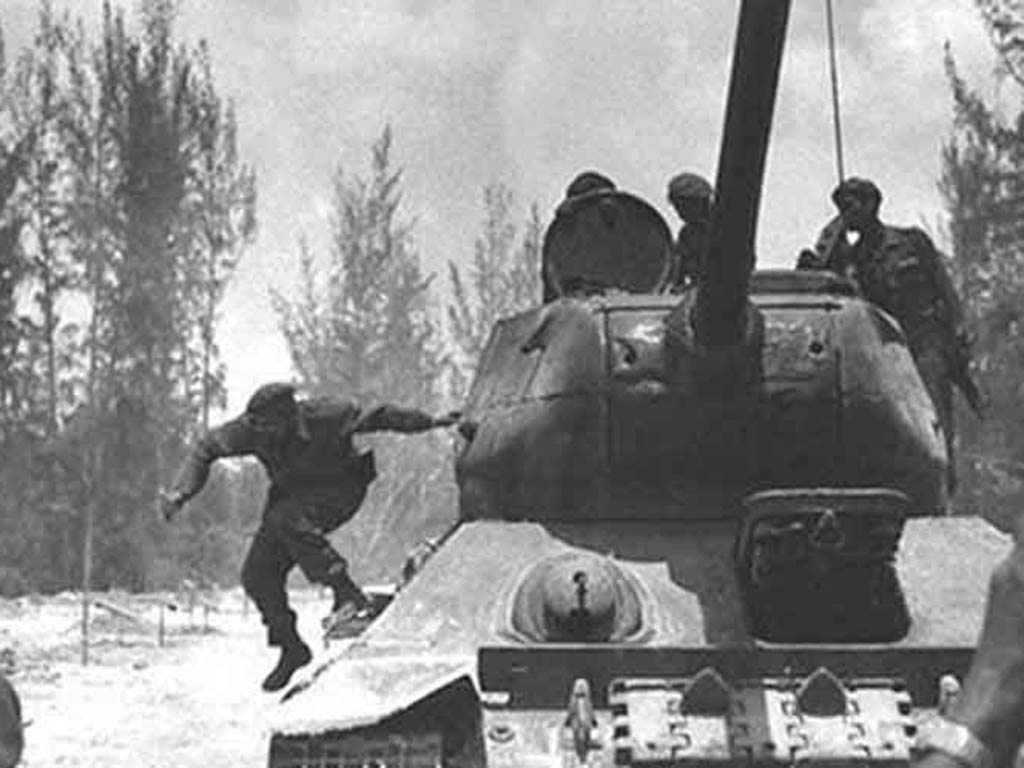Some 1,500 armed troops, trained and transported by the Central Intelligence Agency, had landed on April 17, 1961, to set up a beachhead, establish a provisional government already appointed in the United States, and request direct intervention by the US Army.
The immediate response of battalions from the Rebel Army, the National Revolutionary Police, and the popular militias thwarted the plan. The participation of the T-34 tank division and SAU-100 self-propelled guns, which had arrived in Cuba from the then Soviet Union a few months earlier, was decisive for the victory.
The columns No. 1 and No. 2 of the Rebel Army, howitzer batteries, and the Police battalion took part in the battle, and the emerging revolutionary air defense and air force repelled the attacks of the enemy air force since the previous day.
On April 18, 1961, the revolutionary leader Fidel Castro inspired the combatants when from one of the armored vehicles bombarded and hit the Houston vessel, as also did the Air Force, one of the US ships that transported more personnel and equipment for the mercenaries.
The attacks of the self-propelled artillery and the Revolutionary Air Force on the US support fleet prevented the evacuation of the fleeing mercenaries.
One day later, what Fidel Castro would subsequently call the first major defeat of imperialism in Latin America could be proclaimed.
The attack cost Cuba more than 176 lives, including 151 combatants of the Rebel Army, the National Revolutionary Police, and the National Revolutionary Militia; about 300 were wounded, and 50 were maimed for life.
More than 1,200 captured invaders were sent to the United States in exchange for food and medicines.
jrr/iff/jha/evm










